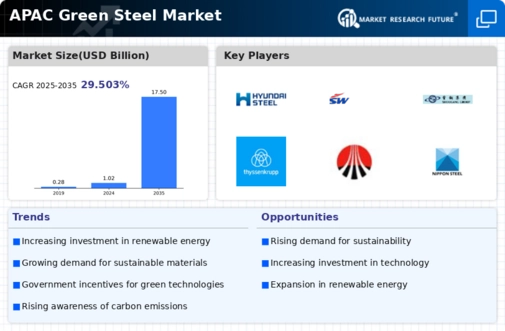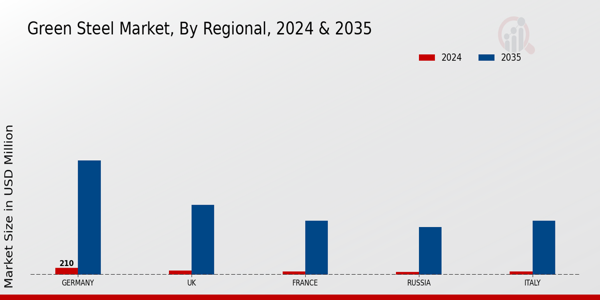The APAC Green Steel Market is witnessing significant transformation driven by increased environmental awareness, government regulations focusing on carbon neutrality, and technological advancements in steelmaking processes. This sector is characterized by a growing competitive landscape where firms are actively seeking innovative solutions to produce steel while reducing carbon emissions. Competitive insights reveal a trend towards collaborations, strategic partnerships, and investments aimed at enhancing sustainable practices in steel production. Companies in this market are increasingly adopting electric arc furnace technologies and hydrogen-based reduction methods, which position them favorably against traditional production techniques that are heavy on emissions.
As nations within the Asia-Pacific region prioritize sustainability, the green steel sector is evolving rapidly, setting up a challenging yet rewarding environment for both established players and new entrants. Hyundai Steel has positioned itself as a significant player in the APAC Green Steel Market through its commitment to sustainability and innovation. The company has made strides in optimizing its production processes to align with environmental regulations and consumer preferences for eco-friendly products. Hyundai Steel’s strength lies in its ability to leverage advanced technologies, which allow it to produce high-quality green steel while maintaining cost efficiency.
The company’s investments in renewable energy sources and implementation of energy-efficient practices have not only reduced its carbon footprint but also enhanced its competitive edge in a market that increasingly favors sustainability. Furthermore, Hyundai Steel's strategic initiatives focus on long-term sustainability goals, making it a formidable competitor in the APAC region's transition towards greener manufacturing. JSW Steel is another prominent entity in the APAC Green Steel Market, with a noted presence in producing sustainable steel solutions tailored to meet the increasing demand for green products.
The company has implemented several strategies that bolster its commitment to reducing greenhouse gas emissions, including investing heavily in energy-efficient technologies and sourcing raw materials sustainably. JSW Steel’s product offerings include a wide range of steel grades that are essential for various applications while emphasizing compliance with environmental standards. The company has expanded its market footprint in the APAC region through strategic mergers and acquisitions, allowing it to enhance production capacities and broaden its service offerings.
Furthermore, JSW Steel's continuous focus on innovation and development in green steel technology underscores its strengths in adapting to the evolving demands of the market, positioning it as a key player in driving the green steel agenda forward within the Asia-Pacific framework.























Leave a Comment